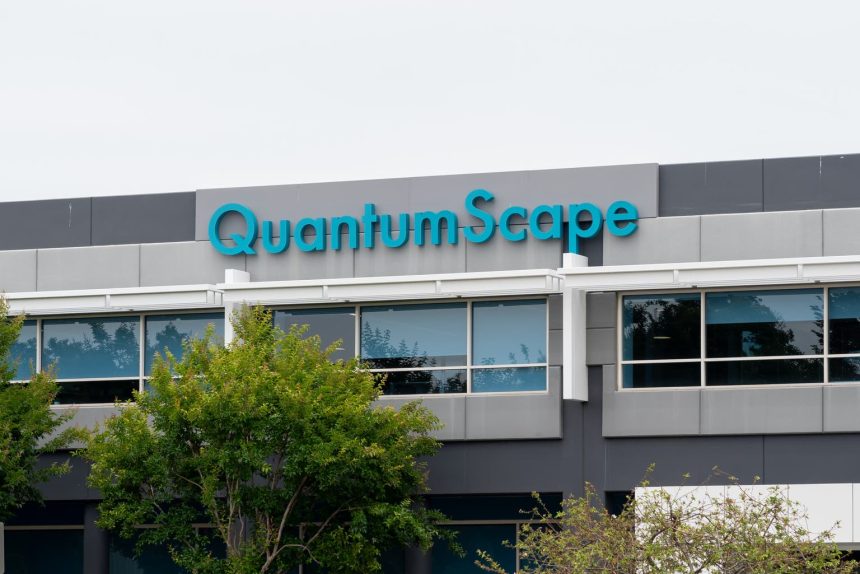Listen below or on the go on Apple Podcasts and Spotify

A new batch of stocks are seeing meme-like action and retail interest. (0:15) AT&T tops estimates. (1:37) Fiserv slumps. (2:04)
This is an abridged transcript of the podcast:
Our top story so far, just when you thought it was safe to go back in the market. Meme 2.
While we’ll not yet at the stage of clearing the beaches and hiring Quint, there are definite signs of meme stocks circling.
Wild trading has ensued for this group of speculative names, with some new players being flagged on social media, like Opendoor Technologies (NASDAQ:OPEN), QuantumScape (QS), Krispy Kreme (DNUT), GoPro (GPRO) and Beyond Meat (BYND).
While Opendoor was changing hands at only $0.50 at the beginning of the month, it has since soared over 460% to above the $3 level before taking a turn south. The digital real estate stock tumbled 10% in a volatile session on Tuesday and is down another 20% today.
SA analyst Julia Ostian says: “The company remains highly leveraged, unprofitable, and exposed to real estate market risks, despite operational progress and cost controls. Upcoming earnings on August 5 could fuel further volatility; a strong report may trigger another rally, while disappointment could crash the stock.”
Department store stalwart Kohl’s (KSS) is also trading like meme name. The stock is sliding the day after it surged 38% on volume that was 20X the normal activity. The trading frenzy sent the highly-shorted stock to its highest level of 2025.
“It has been building from its lows and people started promoting it online,” Morningstar analyst David Swartz said about the day trading action. “They’re buying it because other people are buying… and they think they can start a short squeeze, and that’s what’s happening.”
Among active stocks, AT&T (T) reported a marginal Q2 profit beat, topped revenue estimates by a decent margin and met expectations for key subscriber metrics except fiber net additions.
For 2025, AT&T continues to forecast consolidated service revenue growth in the low-single-digit range, adjusted EPS in the $1.97 to $2.07 range (midpoint $2.02) vs. $2.09 consensus, along with adjusted EBITDA growth of 3% or better.
Fiserv (FI) stock is slumping after the payment technology company lowered the top end of its full-year organic growth guidance range, with Q2 organic revenue falling short of consensus.
Organic revenue growth guidance for the year was adjusted to ~10% from its previous expectation of 10%-12%. For the first six months of the year, organic revenue growth was 8%.
And Lamb Weston (LW) is rallying after topping expectations with its fiscal Q4 earnings report.
Lamb Weston guided for FY26 revenue of $6.35 billion to $6.55 billion (midpoint $6.45 billion) vs. $6.39 billion consensus. Adjusted EBITDA of $1 billion to $1.2 billion is anticipated and capital expenditures of $500 million, including $100 million of wastewater treatment investment.
In other news of note, Dr. Reddy’s Laboratories (RDY) is preparing to launch a generic version of semaglutide, the active ingredient in Novo Nordisk’s (NVO) weight loss drug Wegovy, in 87 countries beginning in 2026, according to Bloomberg.
CEO Erez Israeli told reporters the upcoming launch a significant milestone and confirmed that regulatory submissions are already underway in several markets, as global patents on the drug begin to expire.
Initial launches will target countries where Novo does not hold patents, with a broader rollout planned in key markets like Canada, Brazil and India starting in 2026.
And in the Wall Street Research Corner, more than three weeks since Liberation Day, it looks like U.S. importers are bearing the brunt of the tariff costs so far.
George Saravelos, head of FX research at Deutsche Bank, looked at U.S. import prices for manufactured goods in Q2 and found that foreign companies have not significantly reduced their prices to absorb the new duties.
Exporters seem to be paying very little, he said. For example, despite an average tariff rate increase of over 30% on goods from China, dollar import prices from the country have only decreased by 1%.
The top-down macro evidence indicates that American importers are absorbing the costs into their profit margins. This has, for now, contained the impact on the consumer price index.
His three conclusions:
Because exporters in the rest of the world are not yet feeling significant pain from the tariffs, U.S. trading partners may have more bargaining power ahead of a new August 1 deadline.
The dynamic also suggests there is likely more pressure on U.S. consumer prices in the pipeline.
And because the economic cost of the tariffs appears to be borne mostly by the U.S., it serves as a negative factor for the dollar (DXY).
Read the full article here




